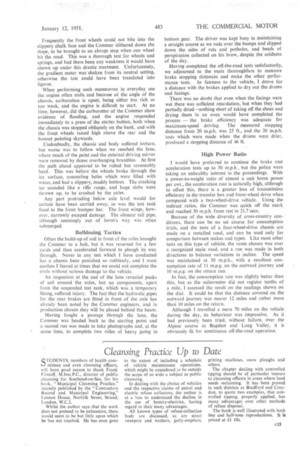Cleansing Practice Up to Date
Page 53

If you've noticed an error in this article please click here to report it so we can fix it.
IUDENTS. members of health com
mittees and even cleansing officers, will have good reason to thank Frank Flintoff, M.Inst.P.C., director of public cleansing for Southend-on-Sea, for his book, "Municipal Cleansing Practice." recently published by the "Contractors Record and Municipal Engineering," Lennox House, Norfolk Street, Strand, London, W.C.2.
Whilst the author says that the work does not pretend to be exhaustive, there would seem to be but little upon which he has not touched. He has even gone
to the extent of including a schedule of vehicle maintenance operations. which might be considered to be outside the scope of so wide a subject as public cleansing.
In dealing with the choice of vehicles and the respective claims of petrol and electric refuse collectors, the author is at a loss to understand the decline in the use of battery-electrics, having regard to their many advantages.
All known types of refuse-collection body are discussed, as are street sweepers and washers, gully-emptiers, gritting machines, snow ploughs and others.
The chapter dealing with controlled tipping should be of particular interest to cleansing officers in areas where land needs reclaiming. It has been proved in such districts as Bradford and Croydon. to quote two examples, that controlled tipping, properly applied, has many advantages over other methods of refuse disposal.
The book is well illustrated with both line and half-tone reproductions. It is priced at £1 10s.




































































































